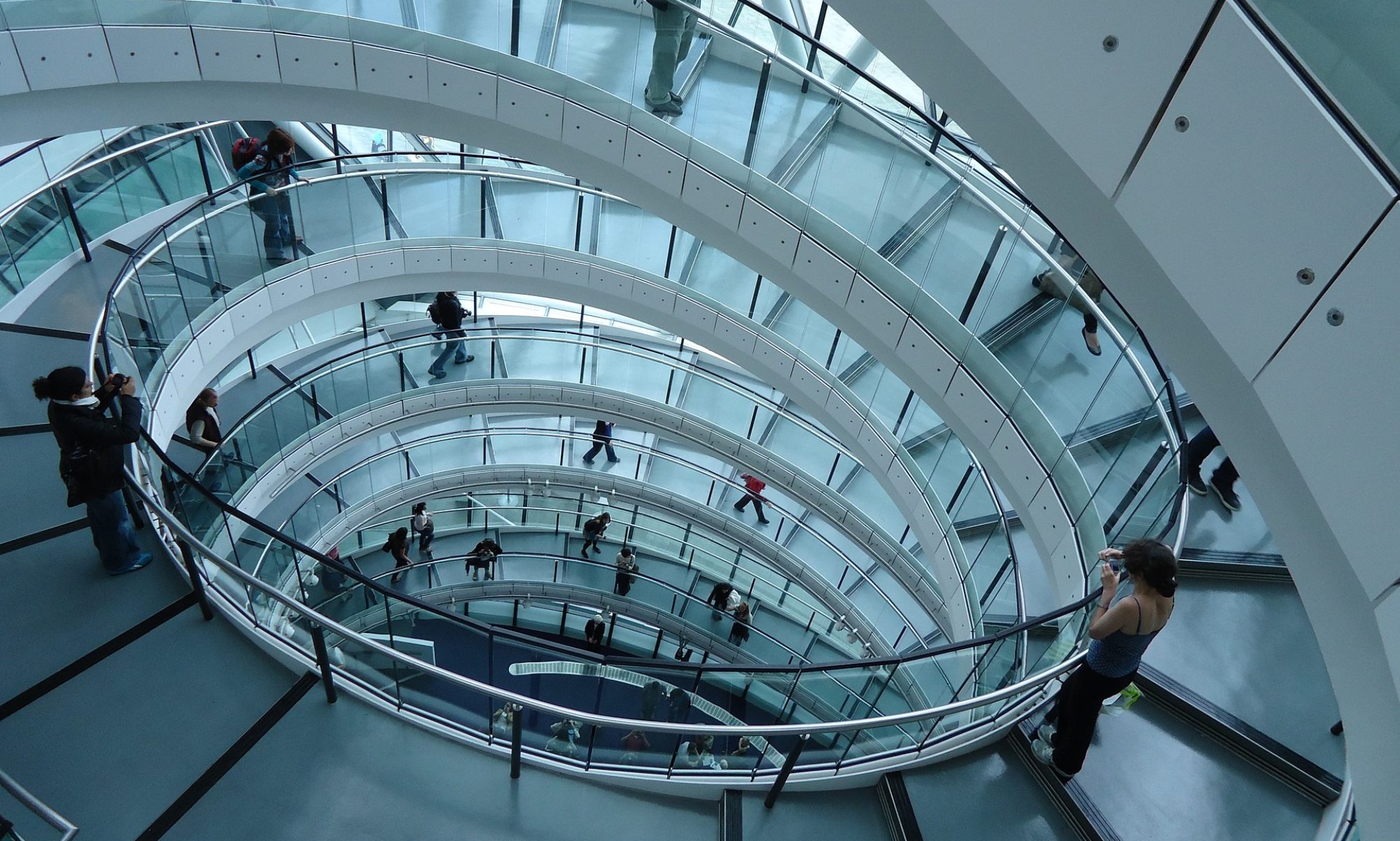The Initiative
For millennia, science has been crafted, practiced and passed down through writings and drawings – on clay tablets, papyrus scrolls or paper pages. We have grown accustomed, and quite frankly, addicted to such flat, two-dimensional, mostly monochromatic representations of knowledge – based on written languages, occasionally enriched with (2-D) figures and drawings. Arguably, the limitations imposed by the medium – a paper page – guided the birth and evolution of all notations currently used in every scientific discipline: from biology, medicine or chemistry to mathematics and computer science. Today’s signum temporis is the “rectangular box with a name in it” which has become the most predominant element of graphical representations used to model just about anything.
New technologies and media have brought significant improvements. Today, one (electronic) tablet can hold and present the contents of thousands of weighty books or a truckload of clay tablets. Hyperlinked text (in HTML, PDF) allows the reader to pass instantaneously from one text fragment to another without having to (look for books on the shelf and) flip pages. Multimedia has become an integral component of presented content. Today’s electronic devices are relatively inexpensive, handy and robust. Their screens do not strain the readers’ eyes. Furthermore they also react quickly and precisely to touch. Soon enough they will provide tactile feedback and true 3-D display capabilities. All of these features clearly enable us to use new, intuitive, interactive, dynamic ways of presenting content.
And so it would appear that it is only people’s ingrained habits that is holding back the progress. It is still common practice to print documents for the purpose of reading them – because paper has a “nicer look-and-feel”, or to take notes first on paper only to later retype them into a computer (or other electronic device). And even though the majority of scientific or educational materials today is prepared, distributed and presented without using actual paper, they are still fundamentally paper-like: pdf articles and e-books, textual manuals or blogs, PowerPoint slides, Wikipedia entries, etc.
Abandoning the paper page – a process that is, without doubt, already well underway – could and should lead to our liberation from all of its drawbacks. We no longer have to be bound to sequential text passages or flat graphical notations; we no longer have to present subject matter in a page-by-page manner. New ways of providing content may use model-based representations of knowledge: three-dimensional (or, in fact, multi-dimensional), multi-layered, interactively navigable, scalable, animated (or otherwise time-dependent), aspect-oriented, user-aware, and much more. We believe that today is an opportune time for this radical change, for replacing the paper page with something new. Something that we call “spread page”.
That is where the Spread Page Initiative (SPIn) comes in. Our goal is to seek out alternative ways of representing knowledge, to propagate them, to elaborate methods and standards for serving that purpose and, finally, to develop and deploy tools allowing the user to fully utilize modern technology for providing such new forms of content. Join up!
A point to note is that SPIn is clearly focused on scientific content. We consider fiction and/or belles-lettres as a completely different world – a world of art, where the word is the artist’s tool to convey feelings, emotions, moods. We do not intend to intrude into that. Although, ideas and tools born out of SPIn might in future serve artists equally well in creating new kinds of artworks.
Vision and Goals
The main idea behind Spread Page Initiative is to abandon flat, text-based, paper-like notation in favor of modern, innovative ways of representing and conveying knowledge. We postulate:
- abandoning the use of mainly-textual description in building content matter;
- abandoning flat (two-dimensional, static) notation;
- using modern, electronic technologies and devices for distributing and presenting content (without regard to limitations imposed by paper and printers – “you won’t need to print it!”);
- greater openness towards the use of new models in many domains of science and technology.
SPIn aims to interconnect various areas of science and knowledge and to bring together experts from different fields, such as: computer science, law, architecture, medicine, biology, engineering, sociology, philosophy, linguistics, and more. We strongly believe that it is both possible and desirable to create multi-dimensional, cross-domain models representing comprehensive range of knowledge. Such models may then be displayed in an aspect-oriented, purpose-dependent manner, projected onto selected (sub‑)dimensions and drawn with any chosen notation (i.e. the model itself should be notation-independent). Viewing will be done predominantly by means of digital devices (although projection onto paper, a.k.a. printing, should also be possible), presentation capabilities of which will surely broaden with time – it seems safe to assume, for example, that true 3-D visual displays will become available and popular in the near future.
Perhaps, such technological change may lead us closer to direct, natural, universal ways of conveying knowledge – one that does not depend on (specific, text-based) languages…
More specifically, we envisage the following goals for our organization:
- elaboration of innovative models, notation systems, and means of visual representation in various disciplines of science (Three-dimensional Representation, Time-varying Representation, Layered Representation, Scaled Detail Representation, Aspect-oriented Representation);
- exploration of possible areas of application (IT – Database Models, Business Process Models, Network Models, …; Engineering – Technical Drawing, Structural Models, …; Medicine – Medical Test Results, …; Law – Agreements, Legal Acts, …);
- development of formats and standards for representing models;
- implementation of tools for building, viewing, editing, manipulating, projecting and publishing such models;
- cooperation with publishers of articles and monographs (e.g. Springer, De Gruyter, Cambridge University Press, Princeton University Press, …), and with other strategic and technology partners;
- overseeing all legal aspects connected with the functioning of our organization, including copyrights, patents, etc.

